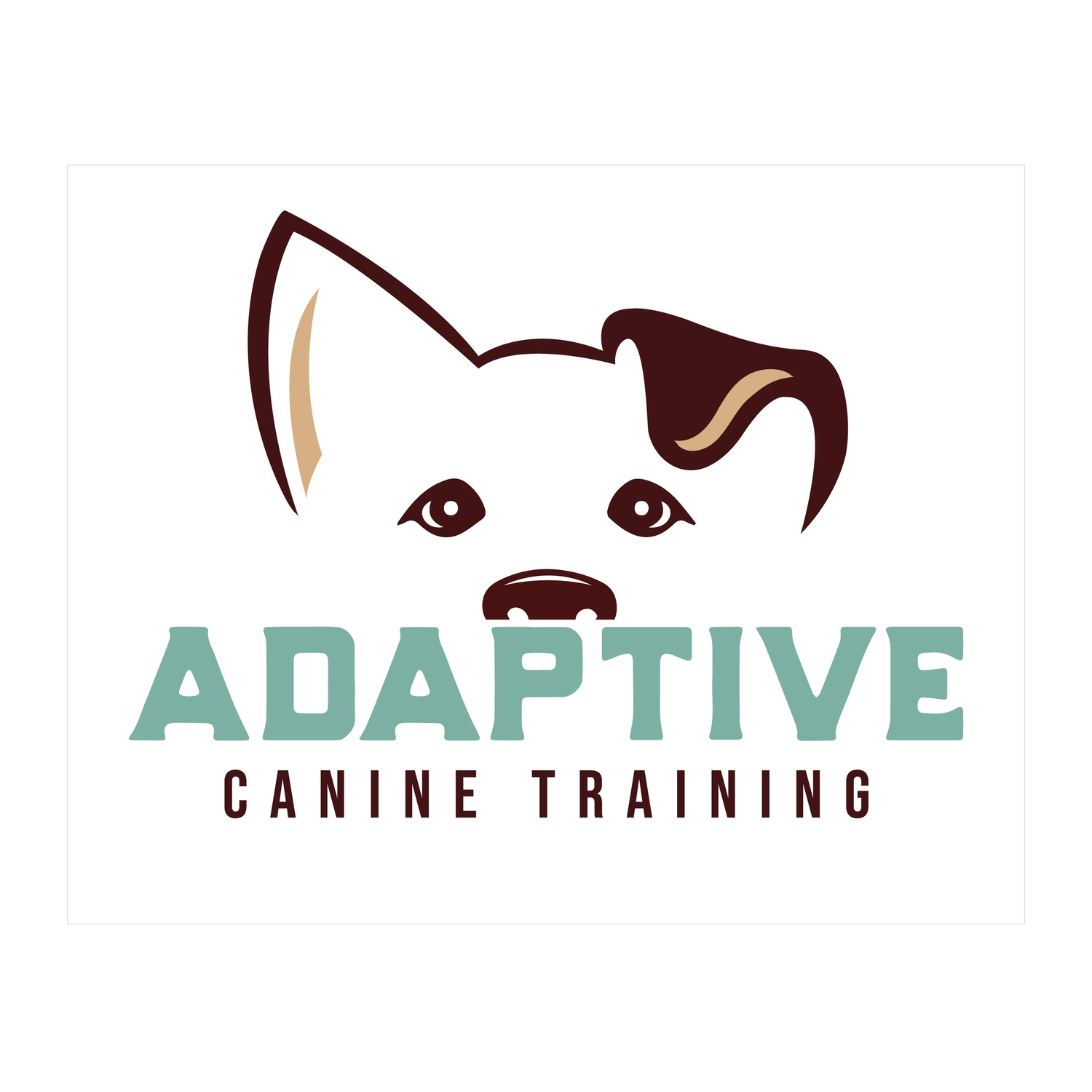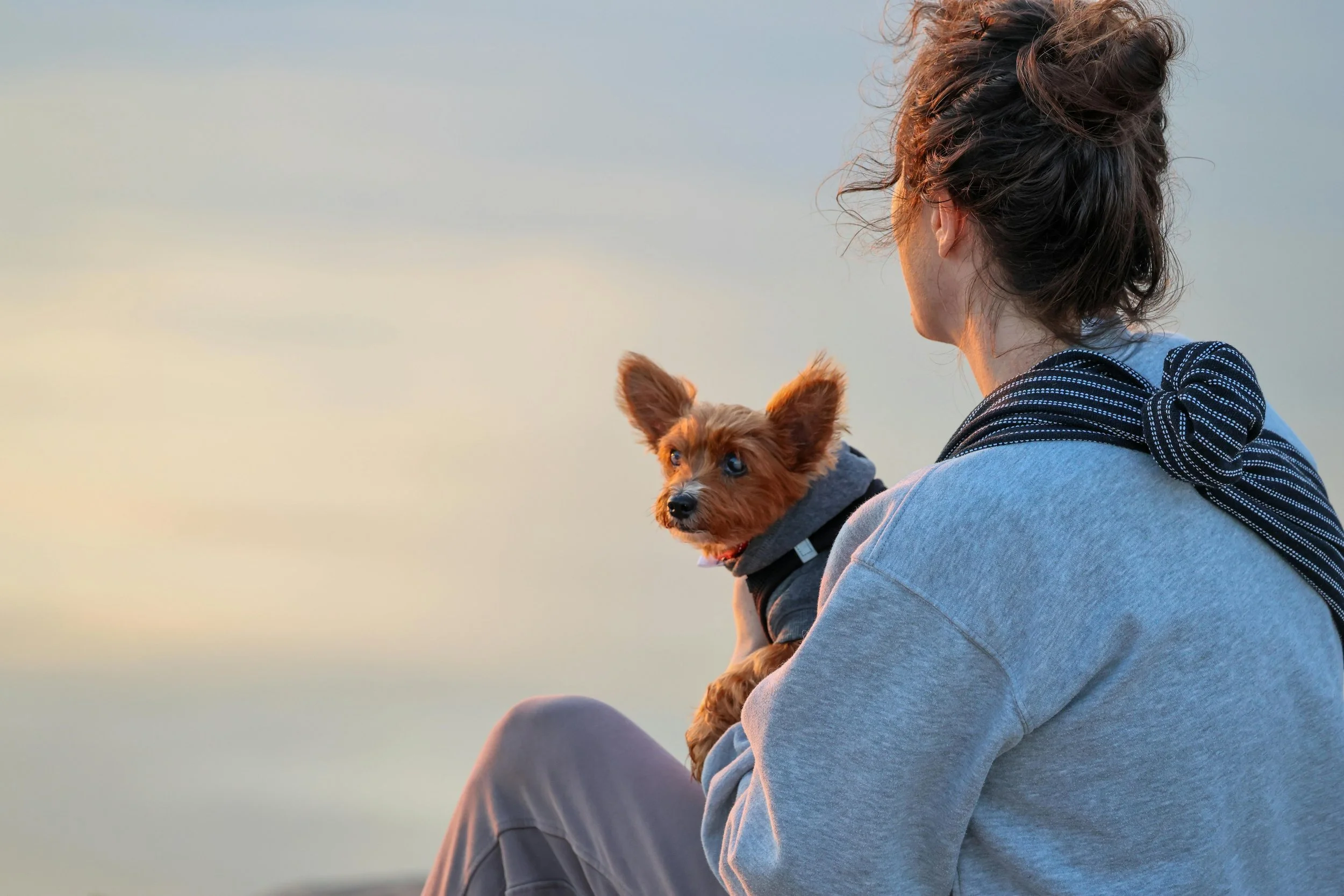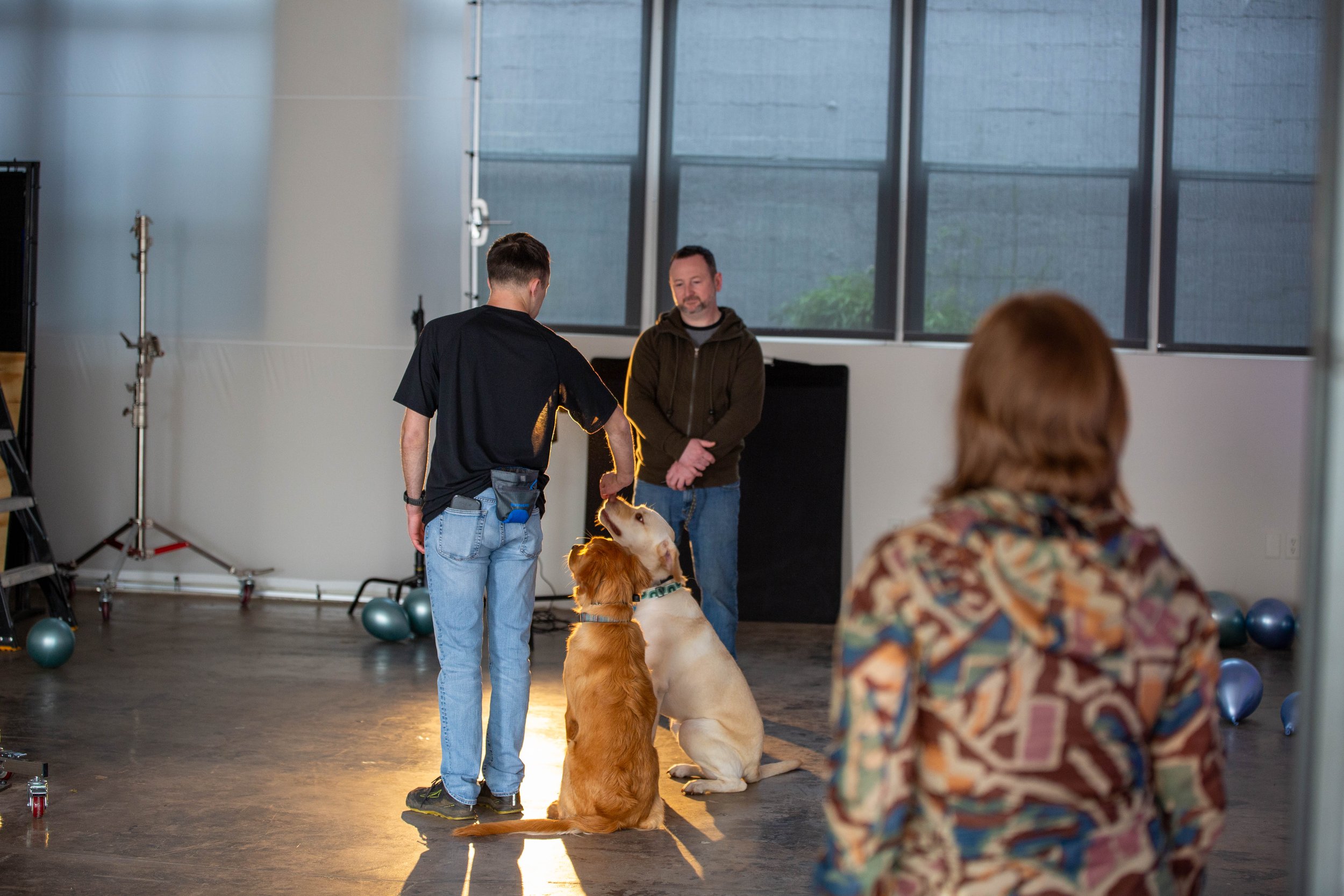Is Your Dog Showing Affection or Anxiety?
I hear it all the time:
“My dog just loves me so much, he always wants to be on my lap!”
Or, “She’s so friendly! She’s always licking me and barking for attention!”
Here’s the thing… what looks like love can sometimes be panic in disguise.
A lot of dogs who seem “affectionate” are actually nervous. They’re seeking constant reassurance from their humans by leaning, licking, climbing onto laps, or demand barking. It’s not that they don’t love you, they do! But what’s really happening is that they’re relying on you to regulate their emotions for them, instead of learning to self-regulate.
Affection or Anxiety?
The difference between affection and anxiety often comes down to why your dog is doing what they’re doing.
A dog who calmly comes to sit in your lap is seeking connection. A dog who retreats into your lap is looking for safety.
One is affection, the other is avoidance.
The same goes for barking; Excited barking usually happens in short bursts with wiggly body language, tail wagging, bouncing, open mouth. Demand barking, on the other hand, sounds sharper and comes with stiff posture, intense eye contact, or pawing at you. That’s a dog saying, “Help me! I don’t know what to do with this feeling!”
Comfort Isn’t Always Comforting
Here’s a hot take: don’t pet your dog when they’re freaking out.
When your dog is hiding, trembling, or barking uncontrollably, it’s tempting to soothe them with touch or words. But what they really need is guidance, not pity. Comforting a panicked dog in that moment can actually reinforce the anxiety. You’re telling them, “Yes, this is scary. You’re right to feel this way.”
Instead, help them find calm by giving space, redirecting their attention, or working on slow, positive introductions. If a dog hides behind you, it’s not just shyness—it’s a signal that they feel unsafe. The goal isn’t to push them forward, but to show them the world is safe without needing to hide.
Building Confidence Through Self-Regulation
A confident dog doesn’t need to cling, hide, or demand. They know how to settle themselves, how to trust the situation, and how to take cues from their environment rather than depending entirely on you.
If this idea of “self-regulation” sounds new or confusing, don’t worry. It’s a big topic on its own. We’ve covered it more in-depth in this blog post on aftercare and long term success, so be sure to check that out if you want to help your dog build confidence in an enduring way.
At Adaptive Canine Training, our goal is to help dogs and owners communicate clearly and live confidently together. Not just with obedience, but with understanding. Because when you can recognize the difference between affection and anxiety, you’re not just training your dog, you’re building trust!




